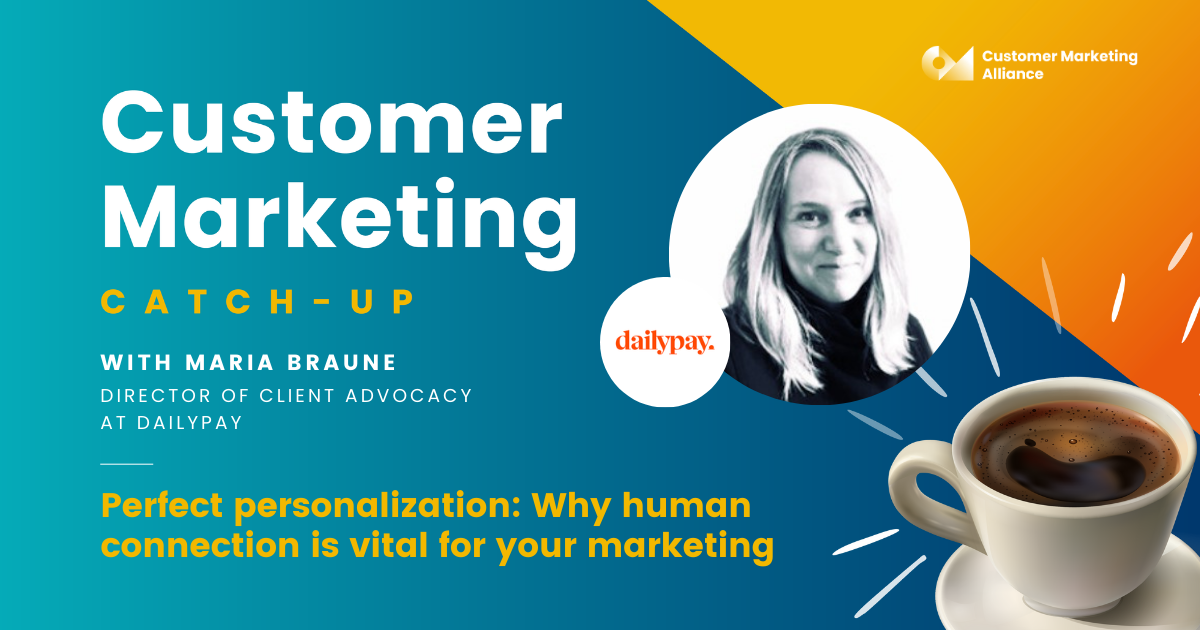With personalization being so important in today’s marketing and appealing to individuals being key to making your brand stand out, how do you accomplish this without compromising your customer’s data or privacy?
According to Forbes Research, 51% of Chief Marketing Officers want to prioritize data-driven campaigns over the next two years - so how can you do all this without breaching the privacy gap between brand and customer?
Let's go through some strategies to give you the data-driven campaign of your dreams without compromising privacy.
Understanding privacy regulations
Privacy regulations are a constantly evolving area of the law, made even more relevant today with the introduction of AI learning tools.
With the internet only growing bigger by the day, customers are becoming increasingly aware of their rights to their data, and how they want it to be used. On top of that, customers want to be able to trust the people who have access to such data, and know it’s going to be used according to the regulations in place.
Here are two examples of the regulations currently in place for customer privacy:
- General Data Protection Regulation (GDPR): Enforced across the European Union, GDPR requires explicit consent for data collection and provides individuals with the right to access, correct, and delete their personal data. Marketers must ensure all data collection and processing is lawful and transparent, significantly impacting how they engage with EU residents.
- California Consumer Privacy Act (CCPA): This U.S. regulation gives California residents the right to know what personal data is being collected, to refuse the sale of their data, and to request its deletion. Marketers targeting Californian consumers need to revise data management strategies to include clear privacy notices and opt-out mechanisms.
With this information in place, how can marketers go about creating personalized experiences whilst also maintaining an ethical approach to data security?

Privacy-first customer marketing strategies
1) Begin on a foundation of trust
Trust is one of the most valuable elements of a customer relationship, and this begins with transparency. Begin the customer journey the right way by broaching the subject of data privacy first.
- Transparent data collection policies: Clearly communicate what data is being collected, how it will be used, and whom it will be shared with. This builds trust and meets regulatory requirements for transparency.
- Opt-in consent models: Move beyond the minimum legal requirements and adopt a proactive approach by using opt-in consent for all data collection. This ensures that consumers are fully aware and agree to their data being used for marketing purposes.
Don’t just stop at fulfilling the legal requirements. We’ve all seen it where companies hide away their privacy policy at the bottom of the page in size ten text size. If you’re not using an opt-in method, make it clear and easy for customers to opt-out.
Trust is easily lost if customers have to go through ten different webpages and fill out too many forms just to keep their data secure. Make sure you’re leading the way and building from a place of trust.

2) Allow anonymous data collection
Many customers like the option data-influenced personalization offers when it comes to creating meaningful and personal experiences with companies - But they don’t always want to be contacted directly or reached out to during campaigns.
This issue can easily be remedied by building personalization campaigns from anonymous data.
- Anonymization and data minimization: Implement techniques to anonymize and minimize the data collected. Use only the data necessary to achieve marketing goals, which reduces the risk of data breaches and increases consumer confidence.
- Segmentation without personal identification: Develop marketing segments based on broad demographic and behavioral data without tying back to personally identifiable information. This allows for personalized marketing without compromising individual privacy.
- Use of privacy-enhancing technologies (PETs): Leverage technologies designed to protect user data by minimizing personal data usage without losing the functionality of the data system. Examples include differential privacy and homomorphic encryption.
Allowing for anonymity without losing the benefits of data-influenced experiences is a great step forward in getting the best of both worlds.
3) Review and renew privacy policies
As with everything, privacy policies are something to be reviewed, audited, and updated regularly - to not only keep up with any changes in the law but also tailor to your customer base's specific preferences and desires.
- Regular privacy audits: Conduct regular audits of marketing practices and data used to ensure compliance with both the letter and spirit of privacy laws and to rectify any issues proactively.
- Leveraging zero-party data: Encourage customers to voluntarily share information directly in exchange for a tangible benefit (like personalized services or discounts), ensuring data accuracy and compliance.
Transparency in privacy will always make customers more willing to trust you with their data. Make sure to be worthy of that trust by using the data to improve customer experiences, without the risk of third-party influence.
4) Prioritize increasing overall customer lifetime value
The success of personalization and privacy will be measured by the improving the ROI of each customer, the increased customer lifetime value, and consistency in the overall customer journey.
Privacy is just another cog in the engine of customer marketing to help convert repeat customers into loyal customers, and loyal customers into customer advocates.
Think about how your privacy policies work to support a stable bottom line and work to maintain your current customer base whilst also onboarding new customers.

Conclusion
When building out your privacy policy when it comes to data collection and personalization, here are the key takeaways:
- Build customer relationships starting with trust, emphasized through transparent data collection policies and opt-in consent models.
- Implement strategies such as data anonymization, minimization, and using privacy-enhancing technologies to help create personalized marketing campaigns that respect consumer privacy.
- Conduct regular privacy audits and update privacy policies to remain compliant with changing laws and maintain consumer trust by demonstrating a commitment to protecting their data.
- Successful privacy practices contribute to increasing customer lifetime value and improving ROI.





